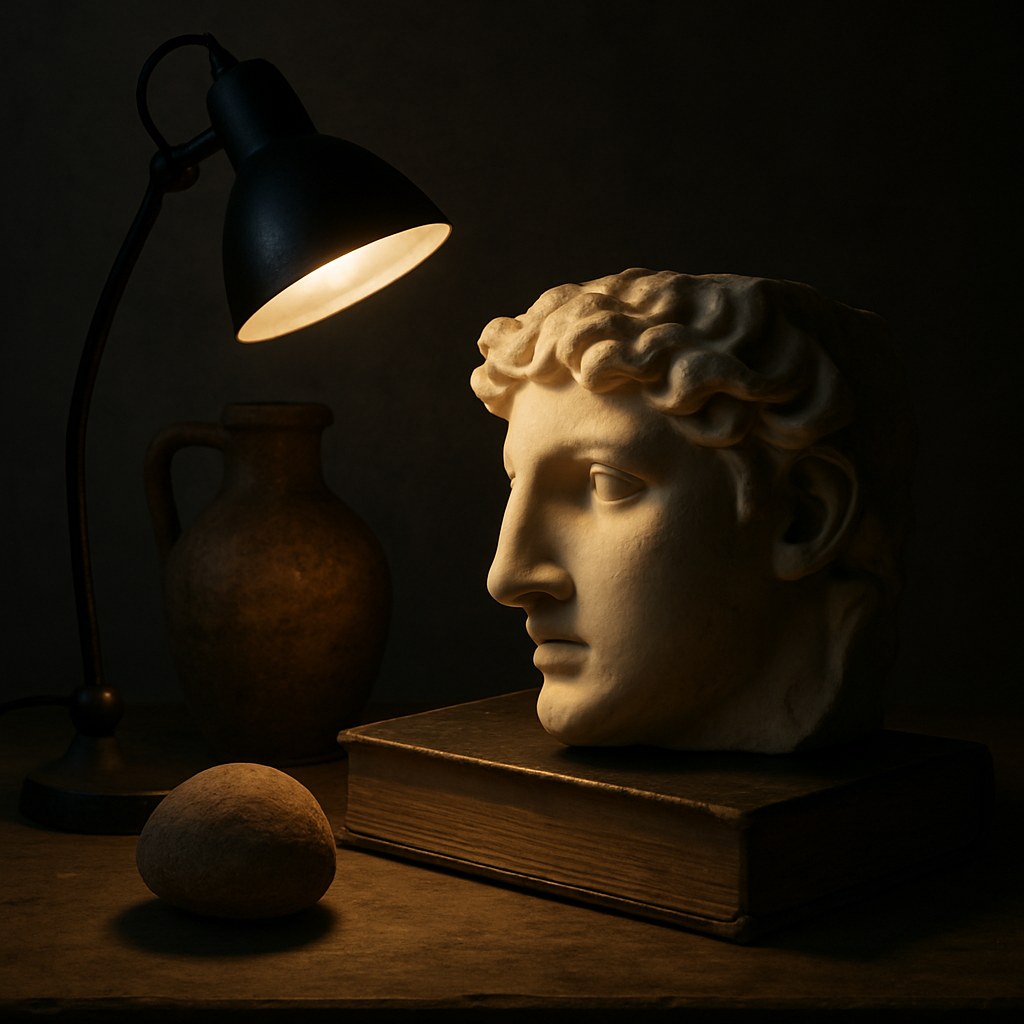Few artists have understood the weight and rhythm of form as deeply as Michelangelo Buonarroti. His mastery was not born from surface likeness but from an inward knowledge of structure — of how spirit animates matter. His realism was never photographic; it was sculptural truth rendered through tension, muscle, and light.
Stone as Living Flesh
Michelangelo carved as though freeing the human soul from within the marble. He believed the figure already existed inside the block, waiting for release. This conviction gave his realism a metaphysical quality — the sense that life itself pressed outward from stone.
In David, the precision of anatomy is not simply observation; it is conviction. Each tendon and twist of the torso reveals his deep study of cadavers, of the living model, and of divine proportion. His realism transcends likeness because it recognizes that structure and spirit are inseparable.
Drawing: The Foundation of Reality
Before the chisel, there was line. Michelangelo’s drawings reveal how contour became revelation. He used contrapposto and the spiral twist of bodies to animate stillness. Through charcoal and red chalk, he captured the pulse beneath the skin. His drawings were not preparatory sketches — they were meditations on motion itself.
Light as Sculptor
Though celebrated as a sculptor, Michelangelo approached painting as a carver of light. In the Sistine Chapel, illumination models form the way sunlight grazes marble. Figures swell into existence through chiaroscuro — that disciplined dance between shadow and brilliance. For modern artists working with light as medium, this lesson remains profound: light is not decoration but structure.
Lessons for the Modern Eye
For artists of light and form today, Michelangelo’s realism offers a quiet reminder:
- Observe not only surface but structure.
- Let illumination carve, not merely reveal.
- Approach every medium — marble, pigment, or light — as if something eternal already lives within it.
Through restraint, precision, and reverence for the body as architecture, Michelangelo shows us that realism is not imitation but awakening.



